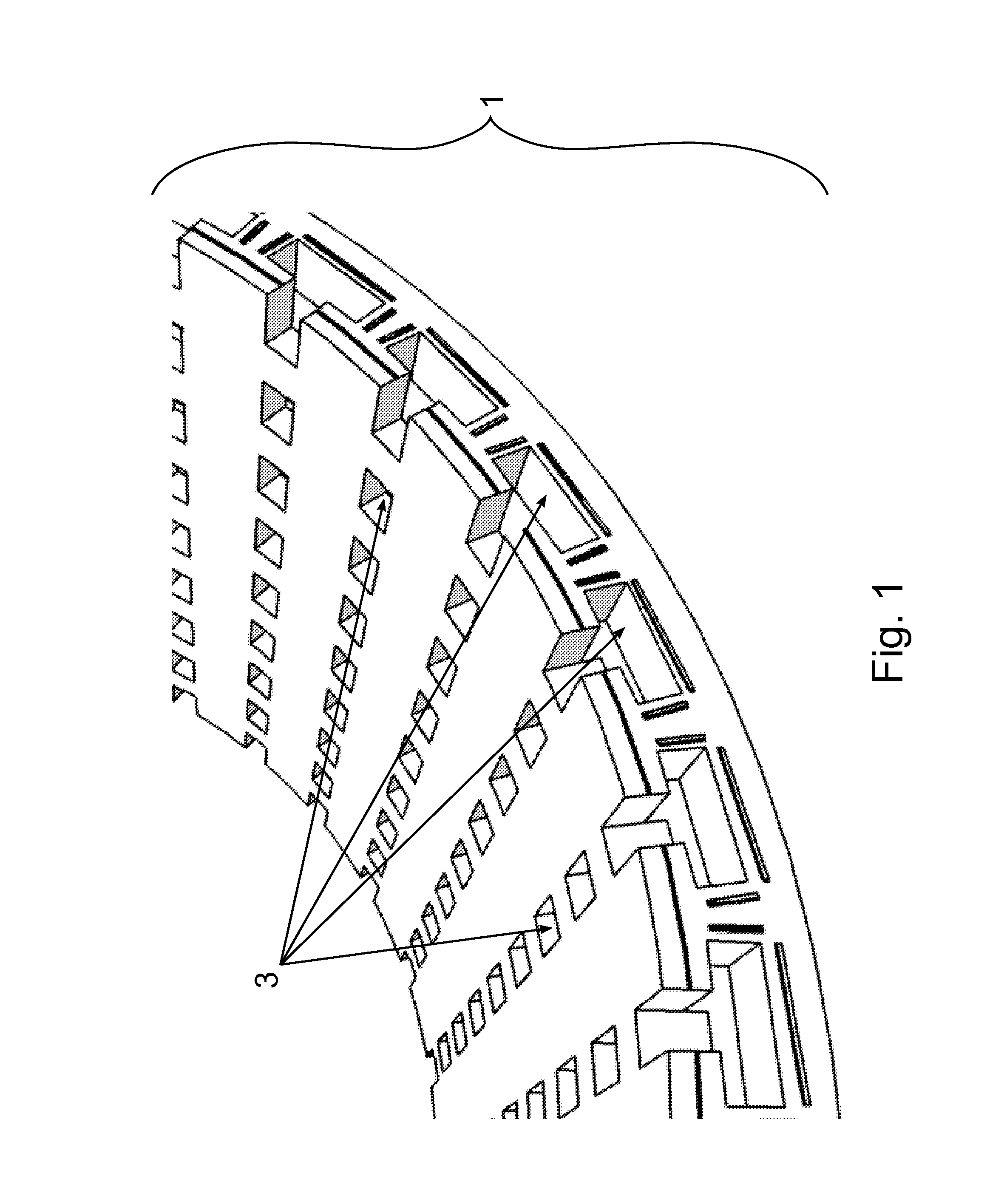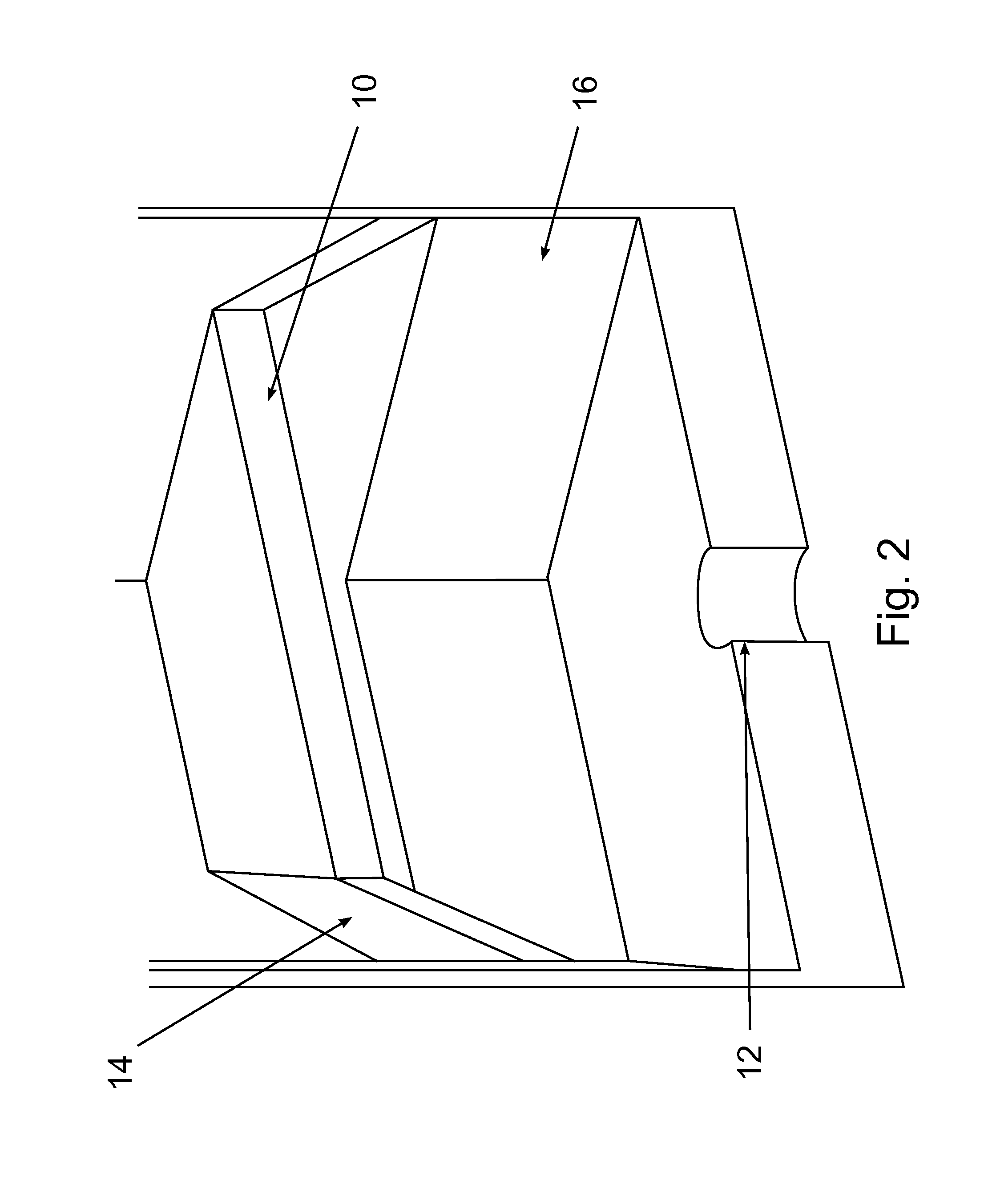Morphing resonators for adaptive noise reduction
a morphing resonator and adaptive technology, applied in the field of acoustic noise absorption devices, can solve the problems of limited tuning abilities, complicated mdof designs, and inability to provide broadband sdo
- Summary
- Abstract
- Description
- Claims
- Application Information
AI Technical Summary
Benefits of technology
Problems solved by technology
Method used
Image
Examples
Embodiment Construction
[0023]Acoustic liner designs are used in modern jet aircraft to attenuate noise. There are two principal types of acoustic liners used in modern jet engines: bulk absorber liners and perforate liners. Tunable perforate acoustic liners can now be designed using shape memory materials, which allow the acoustic liners to tune for frequencies across a wide range, unlike current designs which are limited to specific frequencies or small ranges.
[0024]As used throughout this application adaptive liner means an acoustic liner that can change its acoustic characteristics, such as impedance, in-situ to better match the current operating conditions. As used throughout this application blade passing frequency (BPF) means the result of fan rotor / stator interaction. As used throughout this application bulk absorber means single layer construction. As used throughout this application grazing flow means air flow over liner surface, parallel to the surface. As used throughout this application Helmho...
PUM
 Login to View More
Login to View More Abstract
Description
Claims
Application Information
 Login to View More
Login to View More - R&D
- Intellectual Property
- Life Sciences
- Materials
- Tech Scout
- Unparalleled Data Quality
- Higher Quality Content
- 60% Fewer Hallucinations
Browse by: Latest US Patents, China's latest patents, Technical Efficacy Thesaurus, Application Domain, Technology Topic, Popular Technical Reports.
© 2025 PatSnap. All rights reserved.Legal|Privacy policy|Modern Slavery Act Transparency Statement|Sitemap|About US| Contact US: help@patsnap.com



